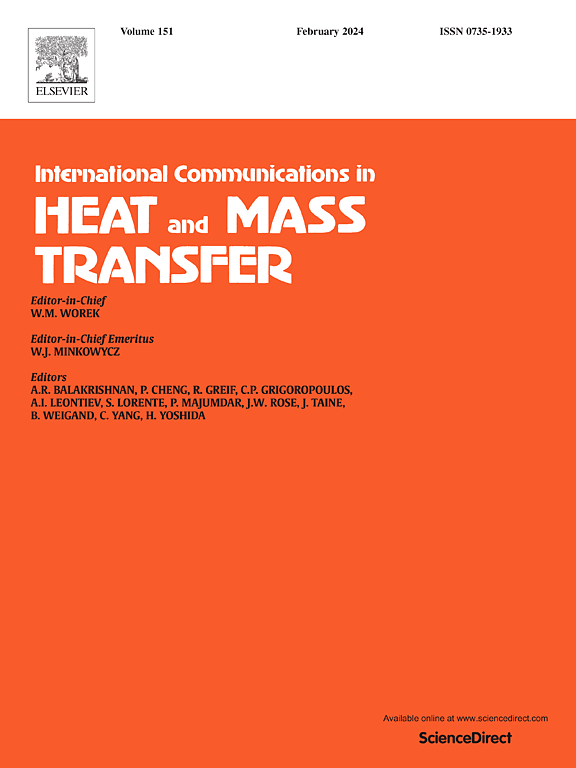基于机器学习的微柱表面核池沸腾传热强化预测
IF 6.4
2区 工程技术
Q1 MECHANICS
International Communications in Heat and Mass Transfer
Pub Date : 2025-05-29
DOI:10.1016/j.icheatmasstransfer.2025.109116
引用次数: 0
摘要
本研究采用贝叶斯优化对四种机器学习模型进行调整,以建立传热系数与受热表面形貌之间的映射关系。这是考虑到先前的实验数据,其中包括从16种微柱中收集的544个样品。此外,还进行了分析,以评估输入参数的重要性。结果表明,Extra Trees模型提供了最好的预测精度,优于三种广泛使用的经验相关性。其决定系数(R2)为0.99343,最低归一化均方根误差(NRMSE)为0.082763。此外,前三个最重要的描述符是平均光束长度(MBL),高度(h)和毛细电阻数(Cr)。最后,利用该优化模型对不同热通量条件下最具影响力的描述子配置进行了预测。研究结果表明,较高的微柱、较大的Cr和较宽的MBL可以在较低的热流密度条件下改善换热性能,因为流动阻力较小,换热面积较大。相比之下,在高热流密度条件下,更短的微柱、更小的Cr和更窄的MBL由于更容易脱离气泡和增强的毛细管泵送效应而具有更好的换热性能。本文章由计算机程序翻译,如有差异,请以英文原文为准。
Machine learning-based prediction of nucleate pool boiling heat transfer enhancement on micropillar surfaces
This study employs Bayesian optimization to tune four machine leaning models for establishing a mapping between the heat transfer coefficient and the morphology of the heated surface. This is performed considering previous experimental data, which includes 544 samples collected from 16 types of micropillars. Additionally, an analysis is carried out to assess the importance of the input parameters. The results show that the Extra Trees model provides the best predictive accuracy, outperforming three widely used empirical correlations. It attains a coefficient of determination (R2) of 0.99343 and the lowest normalized root mean square error (NRMSE) of 0.082763. Additionally, the top three most important descriptors are mean beam length (MBL), height (h), and capillary resistance number (Cr). Finally, predictions are made using this optimized model with the most influential descriptor configurations across various heat flux conditions. The findings indicate that taller micropillars, greater Cr, and wider MBL improve heat transfer performance under lower heat flux conditions due to lower flow resistance and a larger heat transfer area. In contrast, under high heat flux conditions, shorter micropillars, smaller Cr, and narrower MBL lead to better heat transfer performance due to easier bubble detachment and an enhanced capillary pumping effect.
求助全文
通过发布文献求助,成功后即可免费获取论文全文。
去求助
来源期刊
CiteScore
11.00
自引率
10.00%
发文量
648
审稿时长
32 days
期刊介绍:
International Communications in Heat and Mass Transfer serves as a world forum for the rapid dissemination of new ideas, new measurement techniques, preliminary findings of ongoing investigations, discussions, and criticisms in the field of heat and mass transfer. Two types of manuscript will be considered for publication: communications (short reports of new work or discussions of work which has already been published) and summaries (abstracts of reports, theses or manuscripts which are too long for publication in full). Together with its companion publication, International Journal of Heat and Mass Transfer, with which it shares the same Board of Editors, this journal is read by research workers and engineers throughout the world.

 求助内容:
求助内容: 应助结果提醒方式:
应助结果提醒方式:


